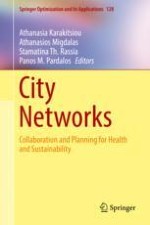Sustainable development within urban and rural areas, transportation systems, logistics, supply chain management, urban health, social services, and architectural design are taken into consideration in the cohesive network models provided in this book. The ideas, methods, and models presented consider city landscapes and quality of life conditions based on mathematical network models and optimization. Interdisciplinary Works from prominent researchers in mathematical modeling, optimization, architecture, engineering, and physics are featured in this volume to promote health and well-being through design.
Specific topics include:
- Current technology that form the basis of future living in smart cities
- Interdisciplinary design and networking of large-scale urban systems
- Network communication and route traffic optimization
- Carbon dioxide emission reduction
- Closed-loop logistics chain management and operation
- Modeling the effect urban environments on aging
- Health care infrastructure
- Urban water system management
- Architectural design optimization
Graduate students and researchers actively involved in architecture, engineering, building physics, logistics, supply chain management, and mathematical optimization will find the interdisciplinary work presented both informative and inspiring for further research.
